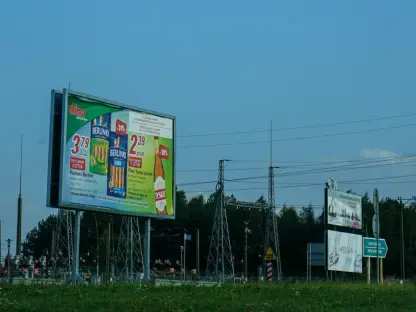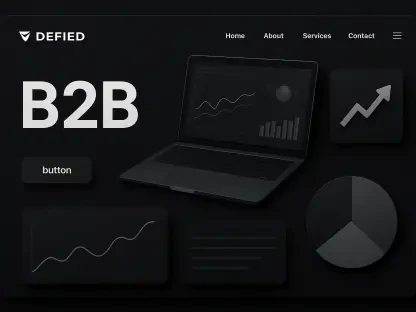Creating short-form videos that are SEO-optimized can be a game-changer in the world of digital content creation. With the rise of platforms like TikTok, Instagram Reels, and YouTube Shorts, there’s a significant opportunity to capture audiences quickly and drive engagement through bite-sized videos that last between 15 seconds to two minutes. However, creating these videos requires more than just creativity, storytelling, and trend-following; success also hinges on strategic use of SEO and analytics. By combining these elements, content creators can significantly enhance their video reach and ensure their content stands out in a highly competitive digital landscape.
Understanding SEO in Short-Form Video
SEO for short-form videos involves optimizing the content to rank well on search engines as well as on platform-specific algorithms. Unlike traditional long-form video platforms, short-form apps like TikTok rely heavily on algorithms to personalize user experiences. Therefore, it’s crucial to optimize your content for both searchability and relevance to reach the right audience. Key SEO aspects for these videos include strategic keyword placement, metadata optimization, and utilizing platform-specific tools. Identifying and integrating relevant keywords in your video’s script, spoken dialogue, or captions is essential. Crafting compelling titles, descriptions, and using tags appropriately can significantly enhance discoverability. Leveraging the unique features of each platform can also boost your video’s reach.
Strategic keyword placement starts with thorough research to uncover terms and topics that your target audience frequently searches for. Tools like Google Keyword Planner, Ahrefs, or TikTok’s search bar can be invaluable in discovering trending topics. For instance, if you are creating a video on “healthy meal prep,” it is beneficial to include keywords such as “quick meal prep tips” or “healthy meal ideas” within your script. These keywords signal to the platform algorithms what your content is about, improving its chances of appearing on relevant searches. Moreover, metadata optimization plays a critical role. Effective titles and descriptions crafted with primary and secondary keywords enhance the video’s visibility. Additionally, using relevant keywords and phrases as tags intensifies the chances of your content being discovered by its intended audience.
Scripting for Success
The script of your video plays a vital role in SEO. It starts with keyword research to uncover terms and topics that your target audience frequently searches for. Tools such as Google Keyword Planner, Ahrefs, or even TikTok’s search bar can be valuable for discovering trending topics. For instance, if you’re creating a “healthy meal prep” video, naturally include keywords like “quick meal prep tips” or “healthy meal ideas” in your script. These keywords signal to the platform algorithms what your content is about, improving discoverability.
Including a call to action (CTA) is essential, as it can encourage interaction or prompt conversions. Engagement-focused CTAs encourage viewers to interact with the video, such as “Drop your thoughts in the comments below!” Traffic-driving CTAs redirect viewers to external platforms or pages, like “Visit the link in my bio for more!” Community-building CTAs aim to build a loyal audience, for example, “Follow me for more tips like this!” Conversion-oriented CTAs promote products or services, e.g., “Shop now and get 20% off!”
Timing is critical for the effectiveness of CTAs. Placing them at the beginning can be particularly useful for videos with high drop-off rates, ensuring viewers see the CTA before they leave. Alternatively, integrating them naturally in the middle of the content maintains flow while prompting actions. Ending with CTAs reinforces the desired action and leaves a lasting impression on viewers. Both visual and verbal CTAs can be used to enhance effectiveness. Visual CTAs may include on-screen text, arrows, buttons, and other graphics to direct attention, while verbal CTAs should be simple, actionable, and delivered enthusiastically to encourage viewers to follow through.
Optimizing Video Elements
Beyond the script and CTAs, other elements also play a critical role in SEO. Metadata optimization involves using concise, engaging titles containing primary keywords, writing detailed descriptions that expand on the video’s topic and include secondary keywords, and using relevant keywords and phrases as tags. Adding captions or subtitles not only makes your video accessible but also helps the platform’s algorithm understand the content better. Keywords within captions can boost the video’s searchability, and many users prefer to watch videos without sound, making subtitles essential for engagement.
Hashtags act like an extra layer of SEO. Use a mix of niche-specific, trending, and branded hashtags to enhance your video’s reach. Even in autoplay environments, a strong thumbnail can attract viewers. Especially on platforms like YouTube Shorts, ensure your thumbnail visually correlates with the video’s content, incorporates text overlays, and is high resolution. High-quality visual elements are essential for captivating your audience and making your content stand out in a crowded digital space.
Adding engaging and informative subtitles or captions to your videos can also increase accessibility and engagement. Many viewers watch videos in environments where playing sound is not an option, so subtitles allow them to follow along without missing any information. Additionally, subtitles can help the platform’s algorithm understand the content better, boosting the video’s searchability. Utilizing a mix of niche-specific, trending, and branded hashtags can further enhance the video’s reach. Hashtags function as an additional layer of SEO, connecting your content with relevant topics and trends, making it easier for your target audience to discover your videos.
Platform-Specific Optimization
Each platform has its unique SEO rules. On TikTok, focus on trending sounds and popular keywords. For Instagram Reels, keywords in captions and hashtags are crucial. YouTube Shorts should be treated with the same level of detail as a standard YouTube video, optimizing metadata accordingly. Understanding these platform-specific nuances can significantly enhance your video’s performance.
TikTok’s algorithm heavily emphasizes trends and engagement, so using trending sounds and popular keywords can drastically increase visibility. Similarly, Instagram Reels require optimization of keywords in captions and hashtags to maximize reach. YouTube Shorts, like traditional YouTube videos, need detailed attention to metadata such as titles, descriptions, and tags to perform well in search results. Ensuring high-quality, platform-specific optimization helps your content stand out amid a plethora of videos, capturing the attention of your desired audience and driving engagement.
To successfully navigate these platforms, understanding their specific nuances is crucial. For TikTok, incorporating trending sounds and participating in popular challenges can increase the chances of your video being featured on the For You Page, enhancing visibility. On Instagram Reels, using relevant keywords in captions and strategic hashtags boosts discoverability, while on YouTube Shorts, ensuring meticulously optimized metadata can help videos rank higher in search results. By tailoring your SEO practices to fit the unique requirements of each platform, you can achieve better engagement and reach a broader audience.
Metrics and Analytics
Understanding metrics is crucial to refining your video strategy and increasing visibility. Key metrics to track include view count, watch time and average view duration, engagement rate, shares and reposts, follower growth, click-through rate (CTR), and retention rate. High retention rates signify strong storytelling and relevance. Tracking and analyzing these metrics should inform your content creation process. Identify drop-off points using retention rate analytics to see where viewers lose interest. Compare content types to determine which videos yield the best engagement. Experiment with posting times to identify peak activity times for your audience. Monitor engagement trends to differentiate between content that drives high engagement and the content that converts. A/B test various elements, such as thumbnails and CTAs, to find the most effective strategies.
Metrics are pivotal in understanding audience behavior and refining content strategy. View count indicates the reach and visibility of a video, while watch time and average view duration reflect how engaging the content is. Engagement rates, including likes, comments, and shares, provide insights into how well the video resonates with viewers. Shares and reposts can extend your content’s reach to new audiences organically. Follower growth is a valuable indicator of your ability to attract and retain viewers over time. Click-through rates measure the effectiveness of your CTAs in driving traffic or conversions, and retention rates highlight which portions of the video are most engaging or where viewers lose interest.
Using these insights, content creators can make data-driven decisions to improve their video content continuously. Identifying drop-off points through retention rate analytics helps pinpoint where viewers lose interest, offering opportunities to refine the video structure. Comparing different content types aids in understanding which formats yield the best engagement. Experimenting with posting times to identify when your audience is most active can help maximize visibility and engagement. Monitoring engagement trends allows you to tweak content to better suit audience preferences, and A/B testing various elements helps identify the most effective strategies for your videos.
Best Practices for Consistent High-Performance
Creating short-form videos that are optimized for SEO can be transformative in the realm of digital content creation. The rise of social media platforms like TikTok, Instagram Reels, and YouTube Shorts has opened up huge opportunities to capture audiences’ attention quickly and drive strong engagement with videos ranging from 15 seconds to two minutes in length.
However, the key to success lies in more than just being creative, telling a compelling story, or hopping on the latest trends. It’s also essential to employ strategic SEO techniques and analyze performance data to maximize reach. By weaving together creativity with the power of SEO and precise analytics, content creators can dramatically boost their video visibility, ensuring that their work stands out in the fiercely competitive digital environment.
Incorporating relevant keywords, using captivating thumbnails, and optimizing video titles and descriptions are crucial steps in making your content discoverable. Additionally, understanding audience behavior through analytics can help in refining strategies, delivering content that resonates better with viewers. These steps are indispensable in achieving a more significant impact and building a loyal follower base.
Creating such SEO-optimized short videos does not just elevate engagement rates but can also convert casual viewers into loyal followers. This strategy is indispensable for anyone looking to make a mark in today’s fast-paced digital landscape.









